The galleries are on the third floor of the museum and we took the elevator there (although steps are also available). Before entering the Dali galleries, we checked out the Frieda Kahlo exhibition (12/17/2016 through 4/17/2017). The exhibition features 60 pieces including paintings, drawings, and photographs.
Her paintings are autobiographical representations of momentous events of her life. There are two sides of this celebrated artist, the "pain-wracked Frida and the Frida alive to the joys of the universe." Kahlo contracted polio as a child causing deformity to a leg. At age 18 she was in a near-fatal bus accident that ended her aspirations to become a physician. It was during her extended recovery period that she began painting (while still bedridden). She is well known for her self-portraits.
Kahlo was married to famous muralist, Diego Rivera, and they traveled extensively in the US and abroad for him to complete commissioned works. It was a tumultuous marriage with infidelities committed by both that resulted in divorce. Kahlo died at the young age of 47 in her home La Casa Azul, in Mexico, due to her lifelong medical issues. It is generally believed that she committed suicide by an overdose of pain pills.
These first two paintings represent the serious medical issues (spinal damage) she had following the bus accident. The second one represents "force-feeding" tactics used by physicians when she refused to eat during her convalescence.
Below is a self-portrait and a portrait of her mother.
We proceeded to the large Dali galleries that are across the hall for the temporary exhibition space.
Born in Spain in 1901 to a mother who was a devout Catholic and a father who was an atheist, they recognized his imaginative artistic talent at a young age. They were a strong influence on his work throughout his life, although his relationship with his father, a strict disciplinarian, was strained (and this is reflected in many of his pieces). He spent his early childhood and adolescence in Catalonia; went to a French-Spanish school beginning at age 6; and, spent summers and holidays in the coastal resort town of Cadaques on the Mediterranean (where his family had a summer cottage). His early work features the landscape there.
View of Portdogue, Cadaques (1920) Self Portrait (1921)
Salvador and his sister, Ana Maria, were close as children but grew apart when he met his wife and love of his life, Gala. This is just one of many paintings he did of Ana Maria. Also shown, is a still life he painted while still at the San Fernando Academy of Art (Spain). The extreme detail of the still life carried forward into future paintings.
Portrait of my Sister (1923) Still Life (Fish with Red Bowl) (1923)
Dali was expelled from the Academy when he refused to be examined on the theory of art, stating that the academics were not qualified to judge his work. During a trip to Paris, he met Andre Breton, who introduced him to Surrealism. In these works he is challenging the way we look at the "real" world. This phase of painting has been labeled "anti-art." The poster, below, was used to advertise his exhibition at the Julien Levy Gallery in NYC. He added the four cavities (to the original art) that he filled with images that had become part of his work (limp watch, keys, lamb chop and ants) and appeared repeatedly in paintings.
Apparatus and Hand (1927) Surrealist Poster (1934)
In the 1930s, Dali was heavily influenced by Sigmund Freud (whom he met 1938) and his psycho analysis of dreams. This factored into many Dali paintings. The huge hand in the painting below is a metaphor for Dali's discovery of autoeroticism.
The Hand, Remorse of Conscience (1930)
In 1939, Dali was "expelled" from the Surrealism group and entered into what is called his "classical period." Due to World War II, Salvador and Gala moved to the United States for eight years in the 1940s.
Geopolitics Child Watching the Birth of the New Man (1943) represents the interrelationship of geography and politics by showing changes in the world order and shifts of power caused by WWII. The Disintegration of the Persistence of Memory (1952-54) is a recreation of Dali's acclaimed Persistence of Memory (1931) but conveys the explosion of the atomic bomb evoking the devastation of the bomb on human beings.
In the 1950s, Dali painted 19 large canvases of religious, historical, and scientific themes with meticulous details. He called this phase of his work nuclear mysticism as at this point in his life he had become obsessed with geometry, DNA, divinity and experimentation with visual illusions.
The Discovery of American by Christopher Columbus (1958-59) commemorates Dali's Spanish heritage in history, religion, art, and myth as he, like many others, believe Columbus was from Catalonia. The banner Columbus is carrying as he steps into the New World, has the image of Gala as a saint; and, Dali appears in the painting as a monk holding a crucifix. Another large complex painting, The Ecumenical Council (1960) has historical art references and Catholic symbolism. It was inspired by the election of Pope John XXIII and Dali's hope following the destruction of WWII. Gala, his wife, is shown kneeling in the center of the painting and instead of signing it, Dali painted himself into the lower left corner.
Another huge painting of this era, is Galacidalacidesoxiribunucleicacid (1962) inspired by the discovery of the shape of the molecule in 1953. The tragic flash flood in Barcelona that killed 450 people led Dali to meditate on birth/death/rebirth and modern science. Again, Gala, with her back turned, appears in the lower center of the painting.
The Hallucinogenic Toreador (1969-70) is described as Dali's most ambitious double-image painting. The face of the bullfighter can be seen in the central, smaller Venus de Milo with the white drape. The contours of his face and other features are defined by the other Venuses found in the painting. His hat is represented by the arena at the top and the green shadow on the white is his tie. The face of Gala is looking down disapprovingly from the top left portion of the painting as she despised bullfighting. This image of a woman on a raft is in the blue pool near the bottom of the painting is a protest statement from Dali about a modern resort built in his beloved coastal area of Spain.
Dali was born just nine months (in 1904) after his brother died of gastroenteritis. His parents gave him the same name and took him to his brother's grave (at a very young age) where they told him he was the reincarnation of his brother. This had a significant impact on Dali as he often referenced and painted the specter of the brother he never knew as seen in Portrait of my Dead Brother (1963). Gala Contemplating the Mediterranean Sea Which at Twenty Meters Becomes a Portrait of Abraham Lincoln - Homage to Rothko (1976) is another painting where Dali explores the genre of visual illusion. Close up it is a painting of a nude Gala, with a painting of Lincoln to the lower left. But as you step back from the painting, it appears to be a large portrait of Lincoln and the nude practically "disappears" into the background.
Dali continued to paint until the death of his beloved, Gala, when his interest began to diminished. He died in Spain in 1989 at age 84.
I think this quote is a good summation of the essence of the man: "Each morning when I awake, I experience again a supreme pleasure - that of being Salvador Dali."
The first floor of the museum houses the large museum store, Cafe Gala, and theatre.
Administrative offices are on the second floor and the art galleries on are the third floor. The architecture of the building showcases the central atrium where stairs lead to the gallery space. The view of the water and marinas from the third floor are fantastic.
We spent some time exploring the garden and outdoor area at the rear of the museum. This bronze statue celebrates Dali's trademark mustache and the bench featuring Dali's famous limp watch image.
Made of the wristbands provided at the entrance, the ribbons hanging from this ficus tree represents the wishes and hopes of museum visitors. Nearby is the Dali Labyrinth that is made of 6' high hedges with limestone paths. There is a single pathway leading to the center and then returns. It is designed to provide a place quiet contemplation and reflection.
We walked along the water admiring the yachts in the marina behind the museum.
I really enjoyed this museum as I had seen many Dali paintings when visiting the Museo Nacional Centro de Arte, Reina Sofia, in Madrid. I have been reading about him and Gala every since we visited The Dali Museum here. Such a bizarre and interesting character! Of course, the only way to really gain an appreciation for his work is to see it in person.
Admission is $24/adult and $22/65+ seniors which includes audio tour. Parking is an additional $10. For additional information about the museum, you can go to www.thedali.org.
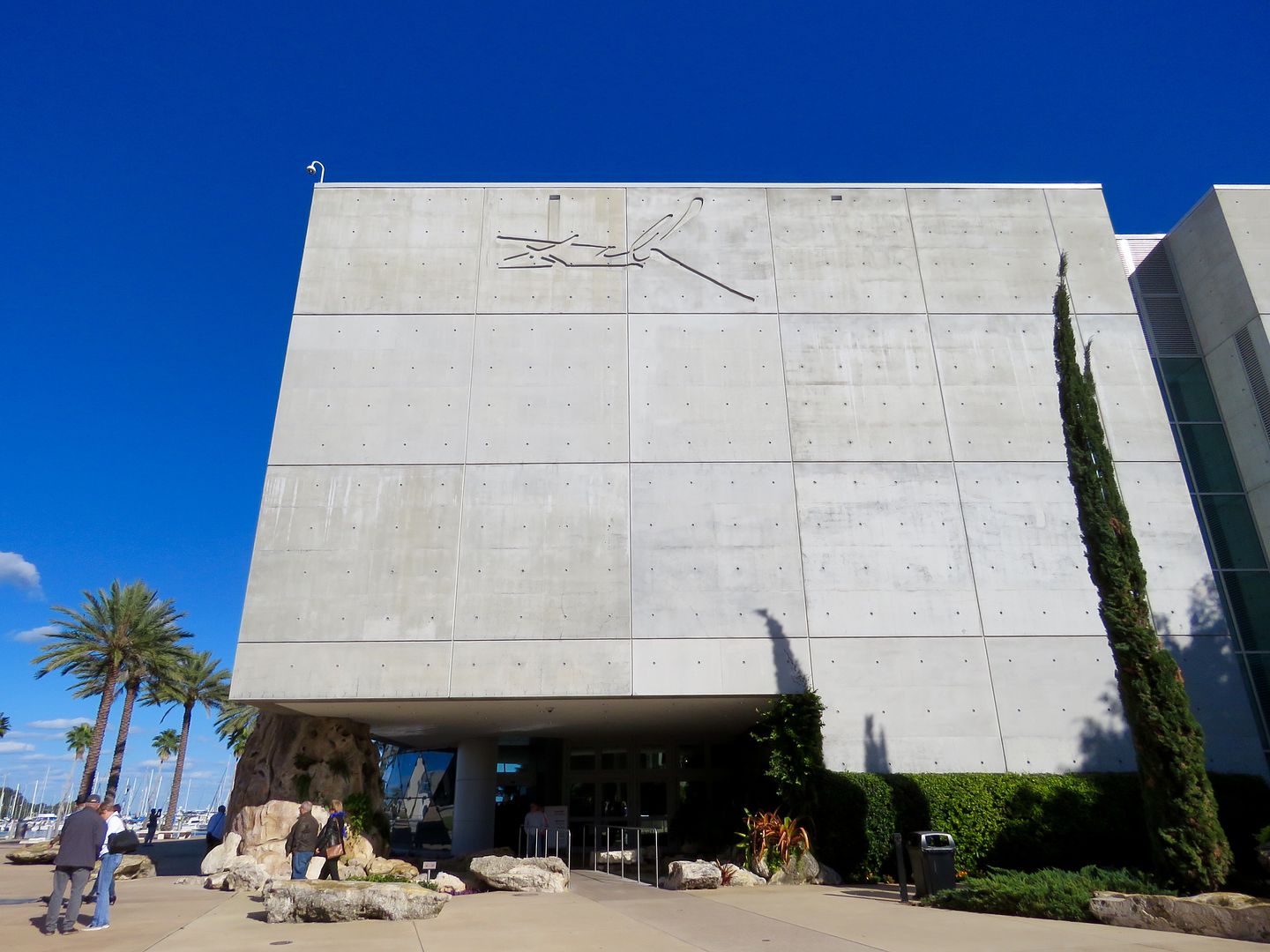
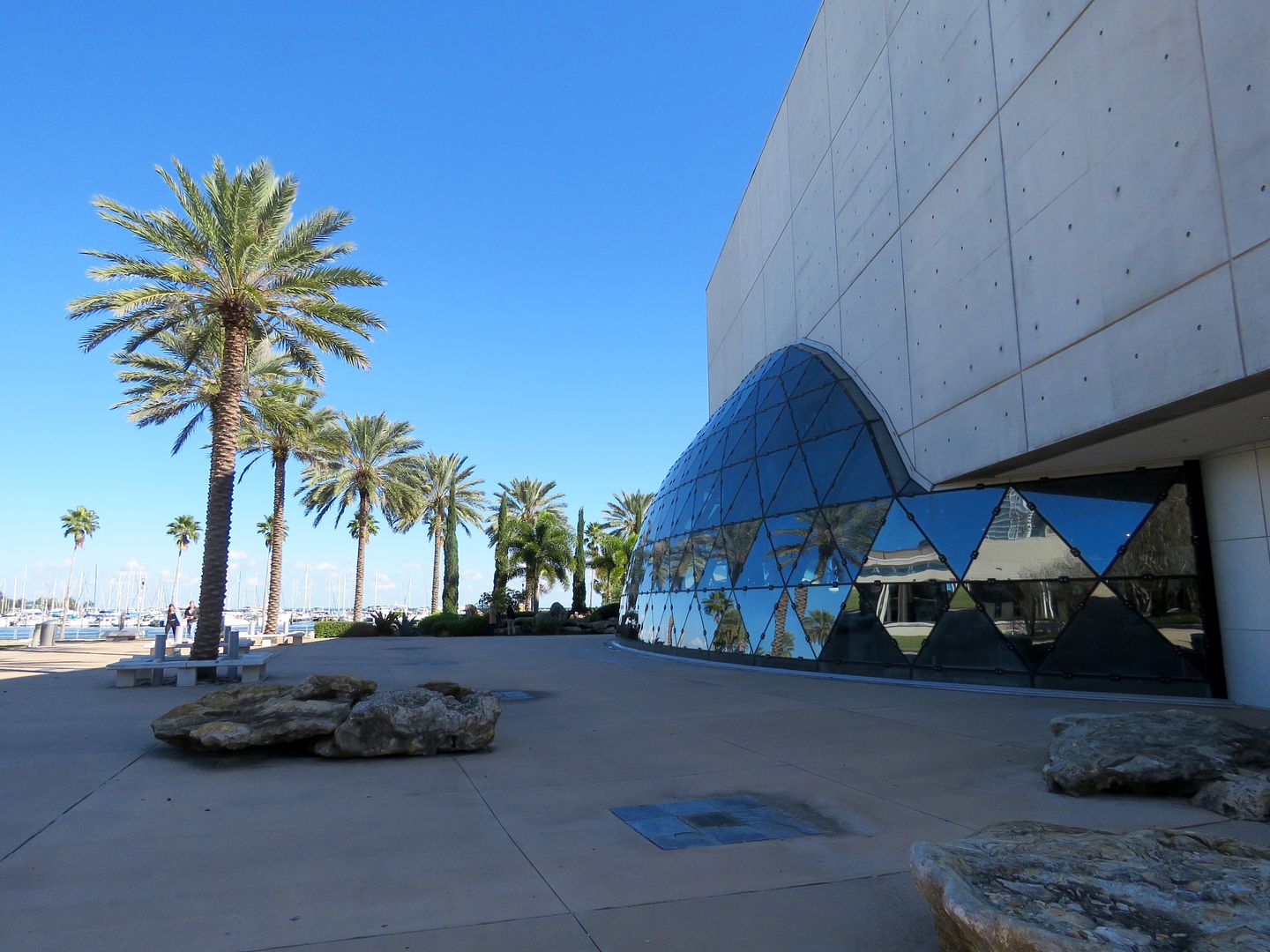
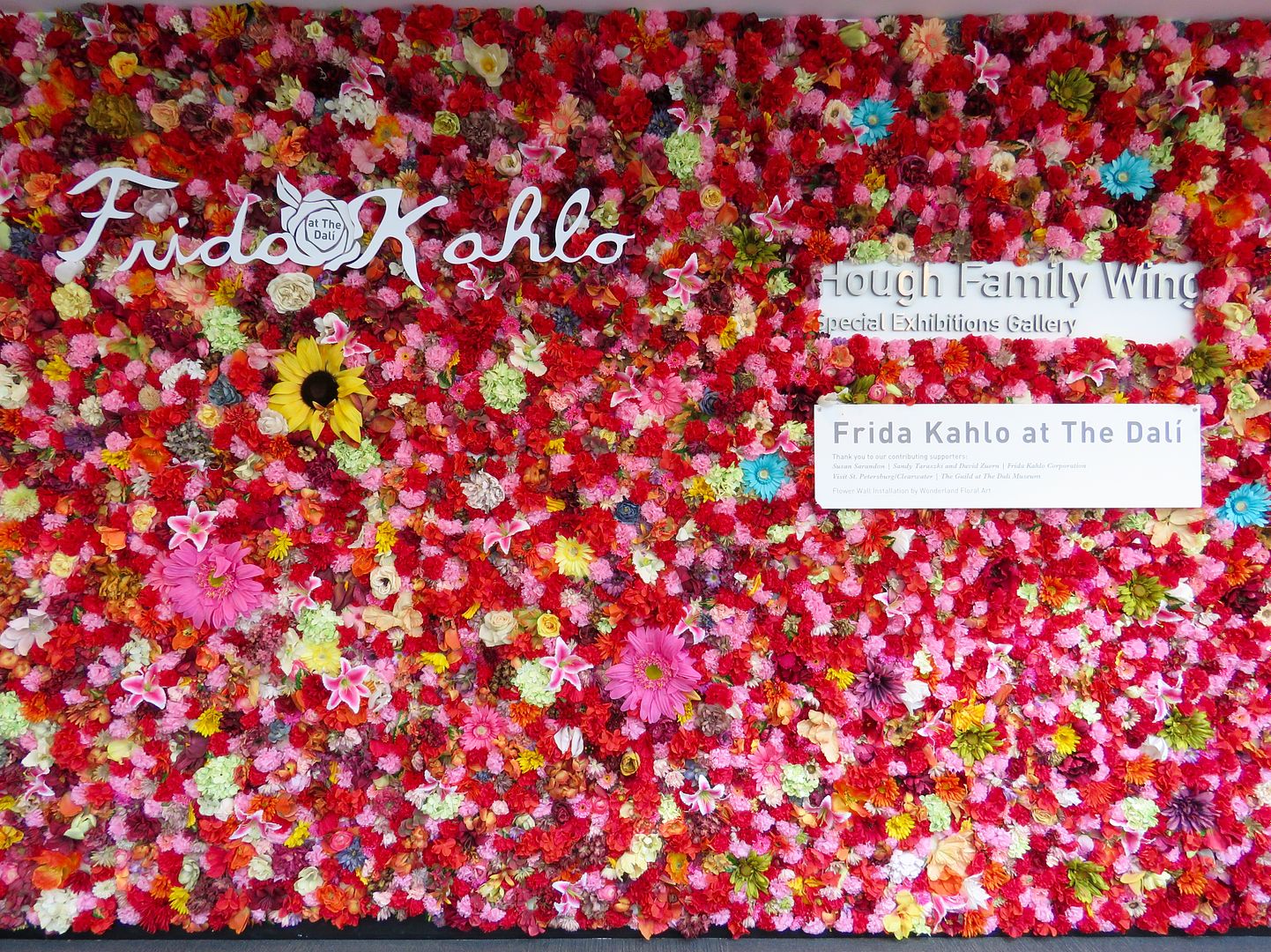
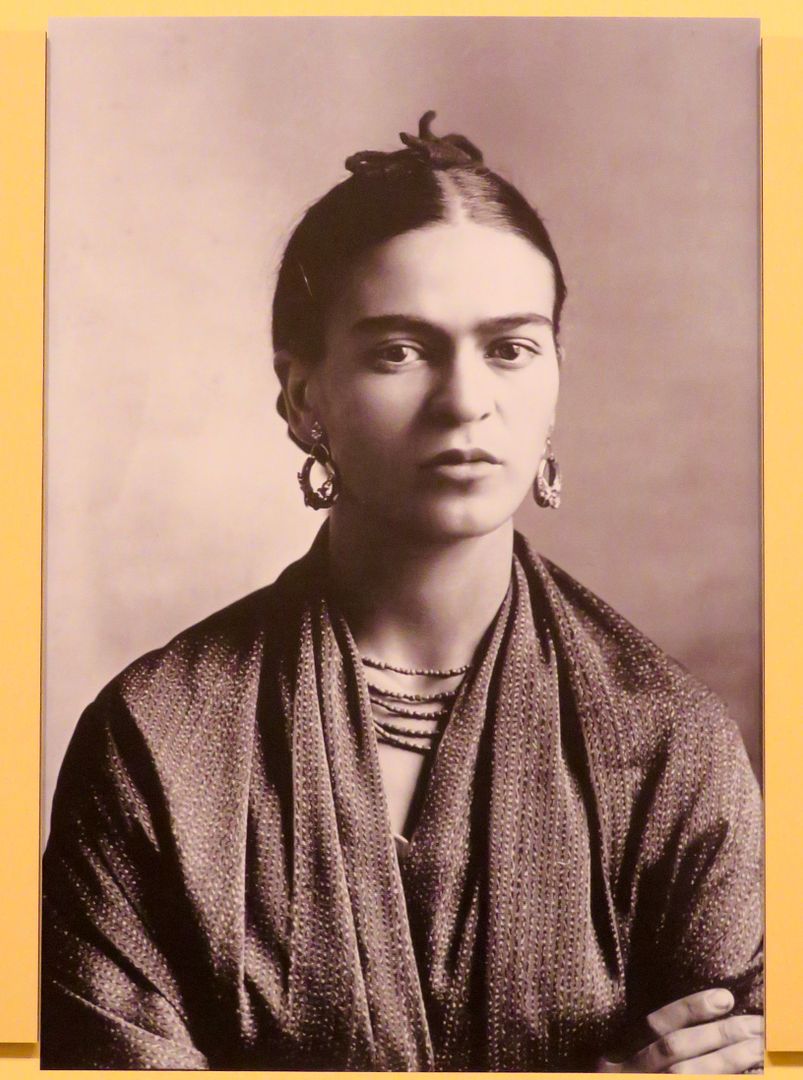
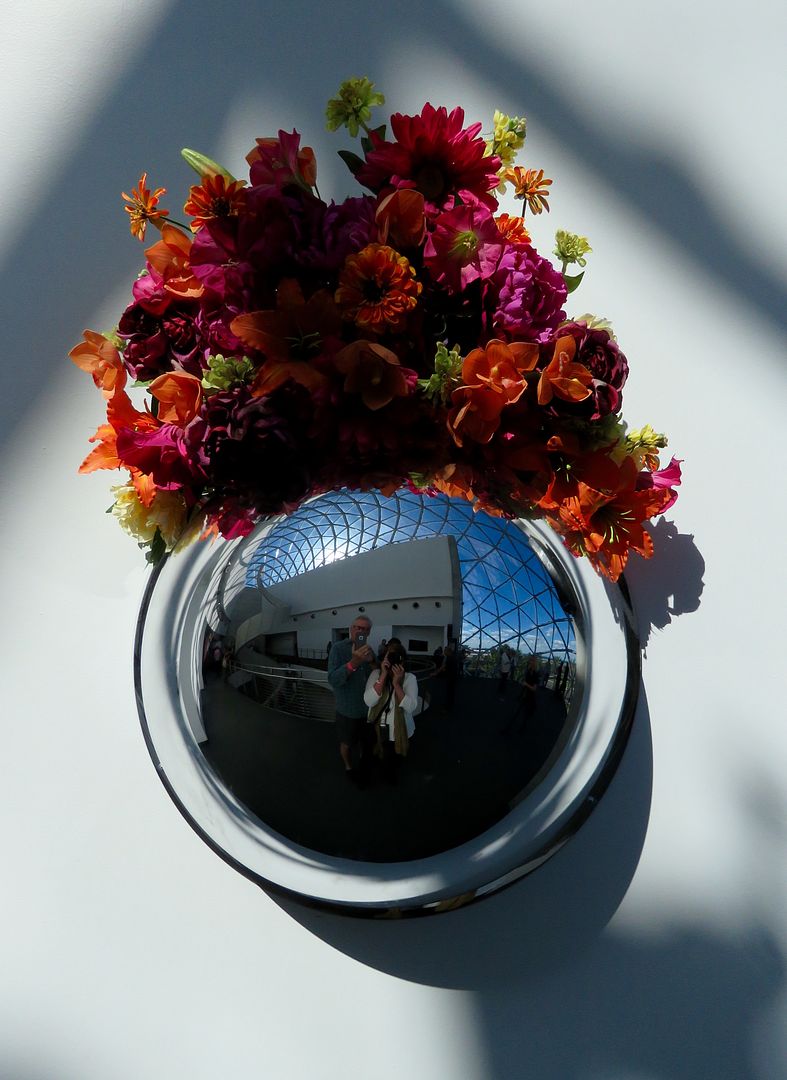
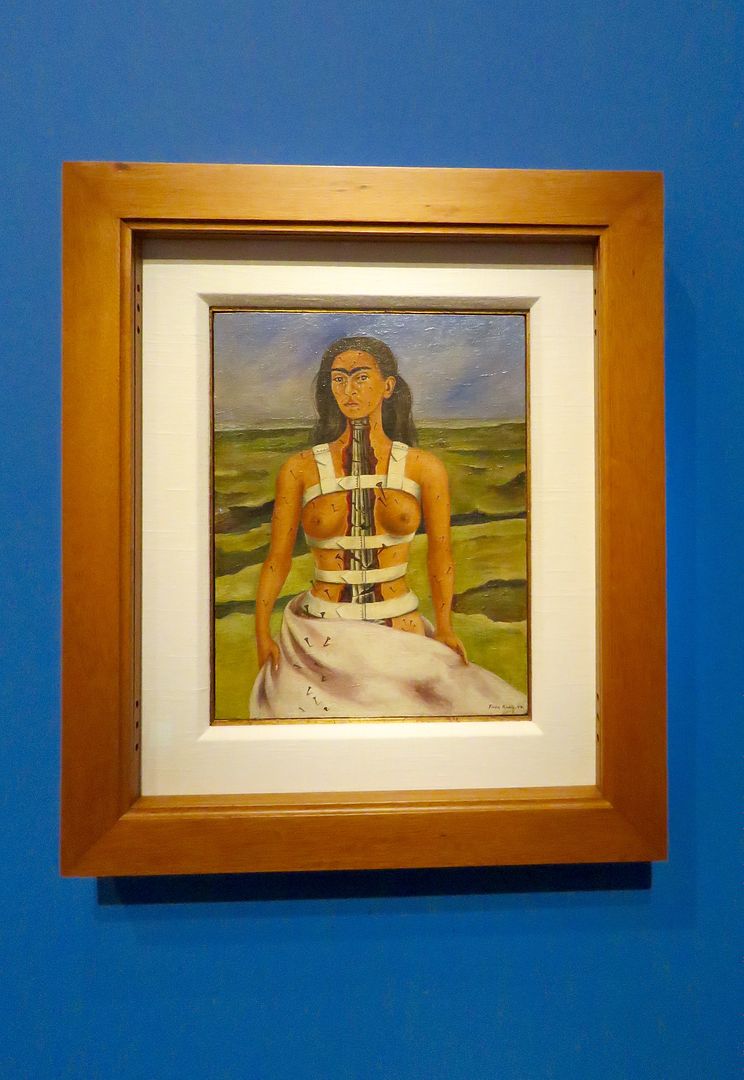
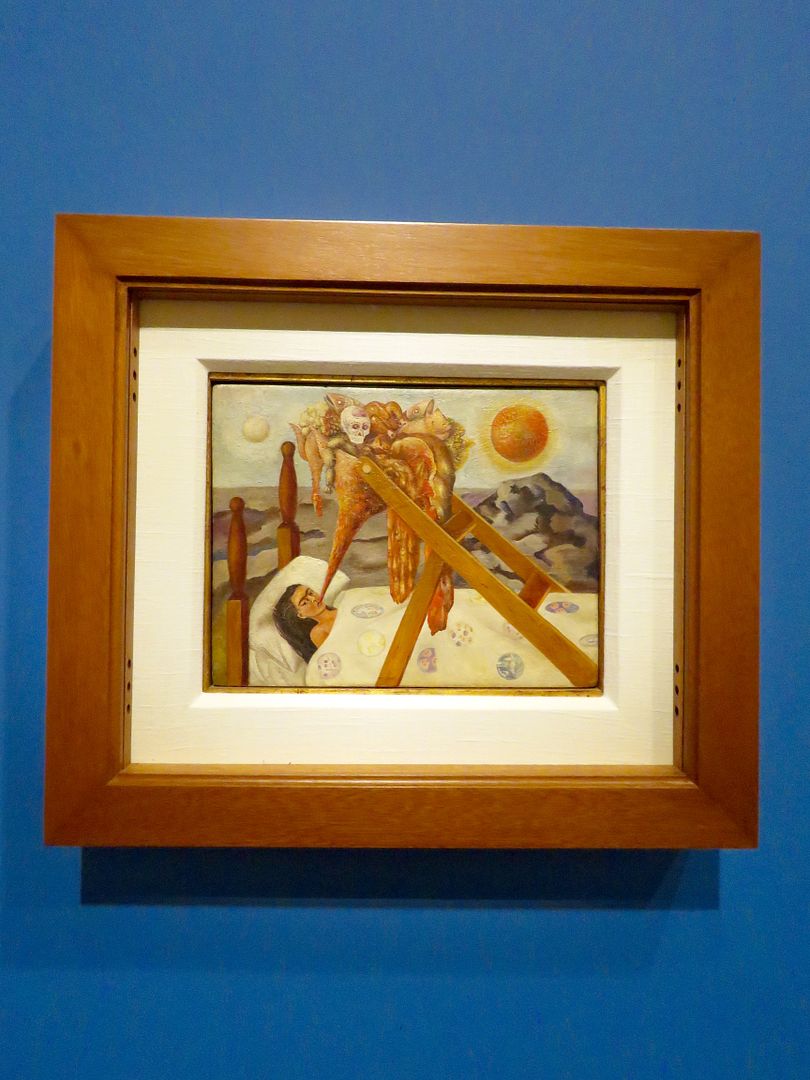
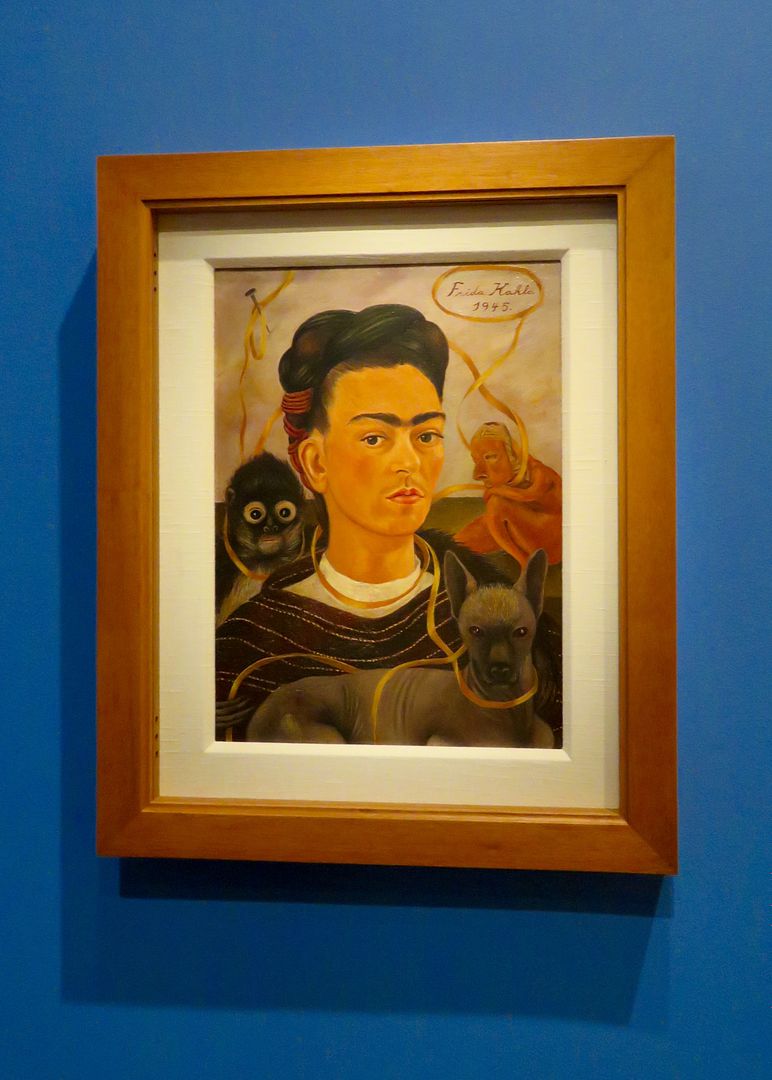
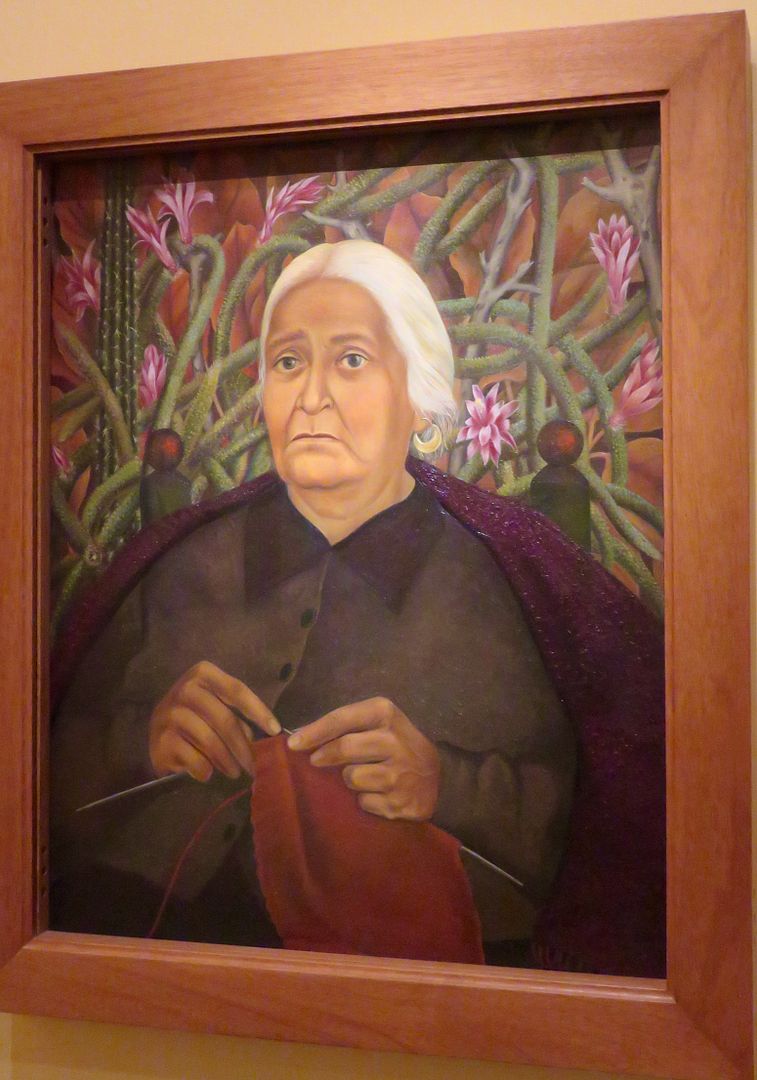
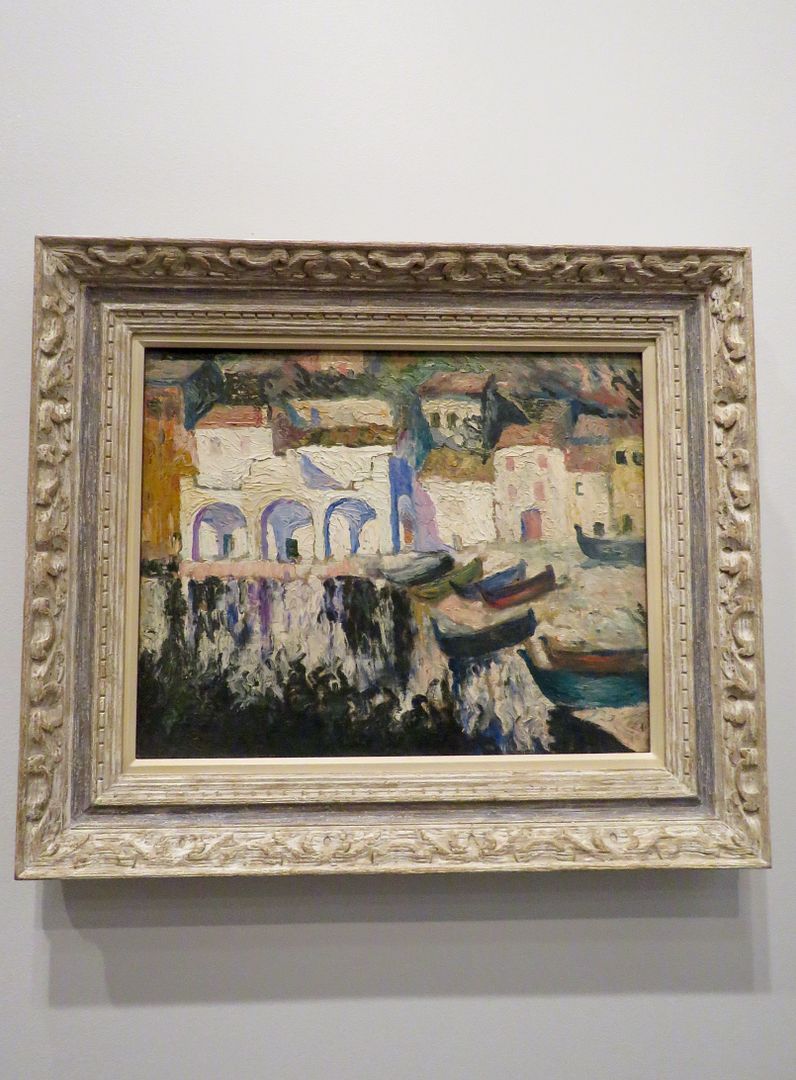

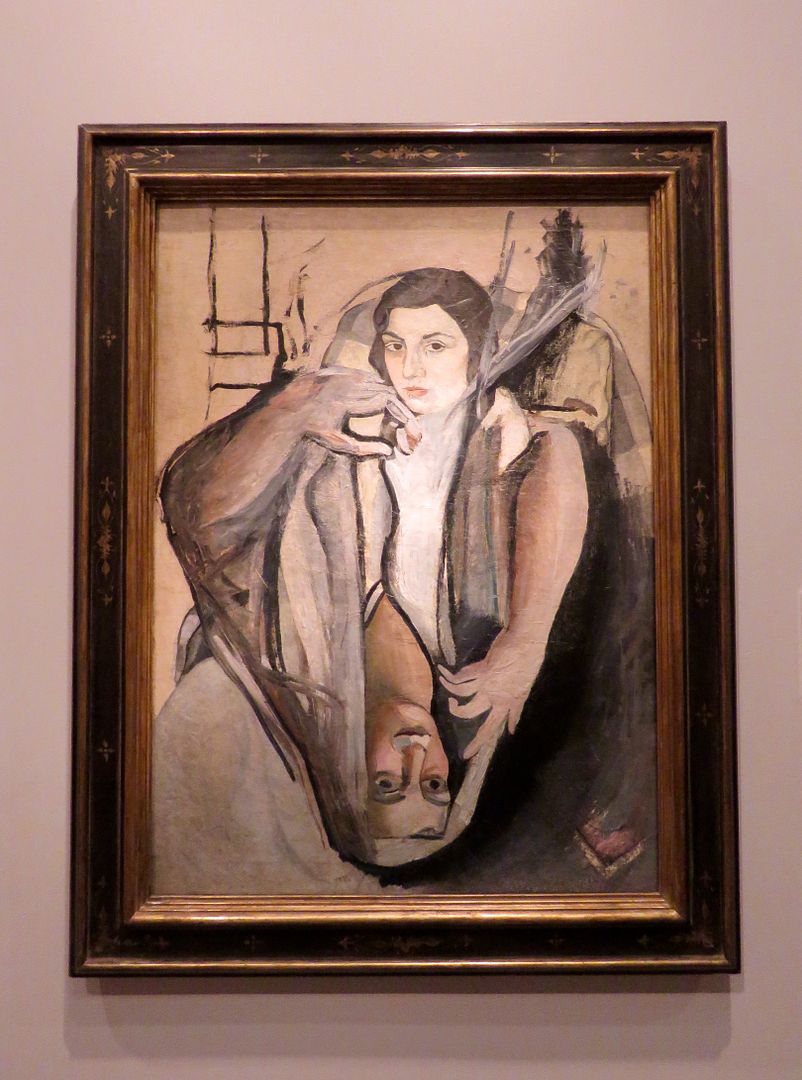
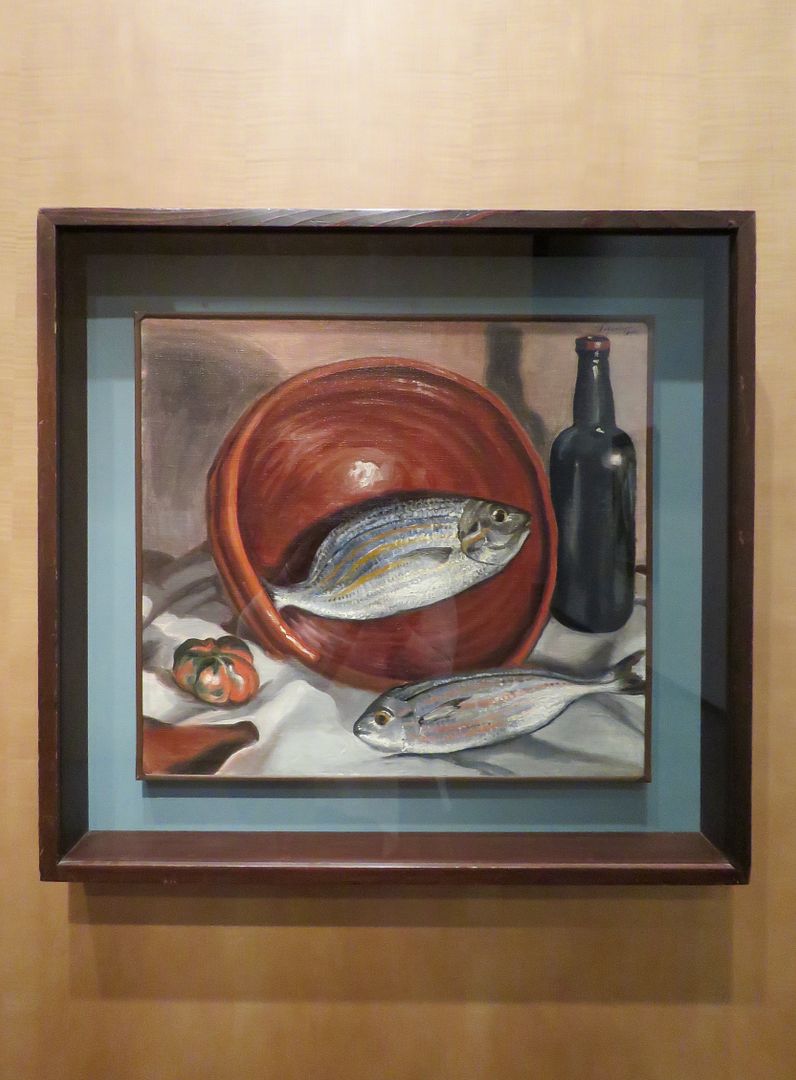

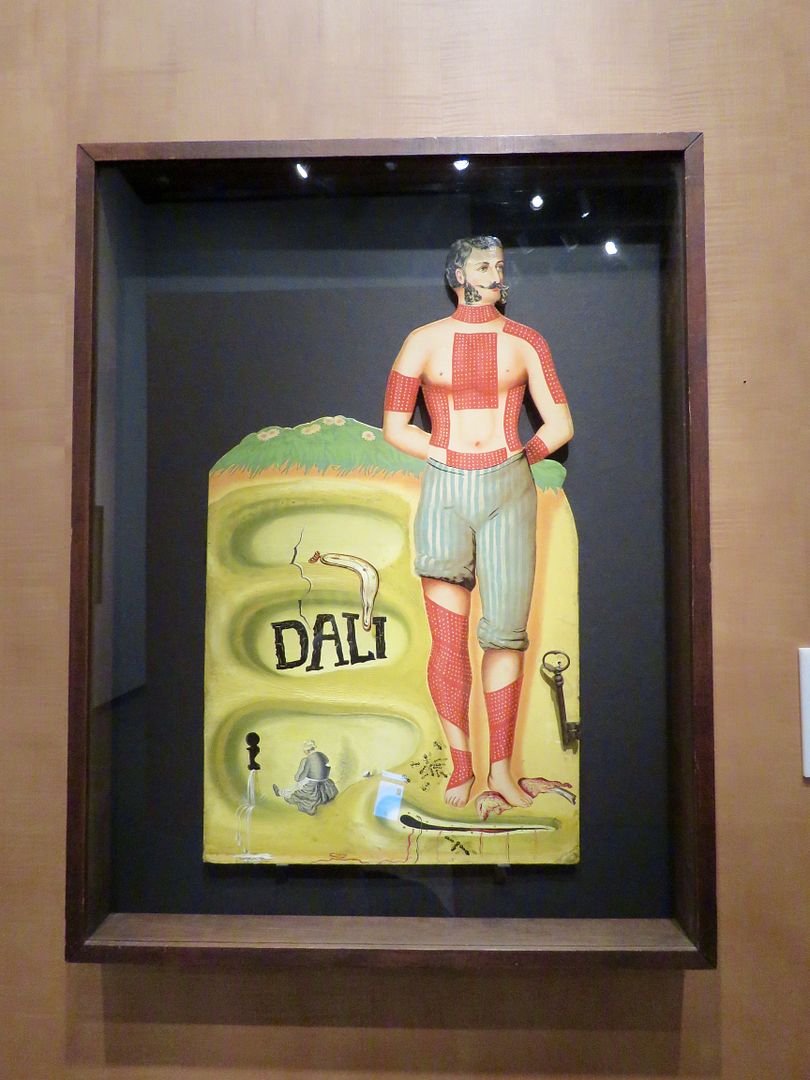

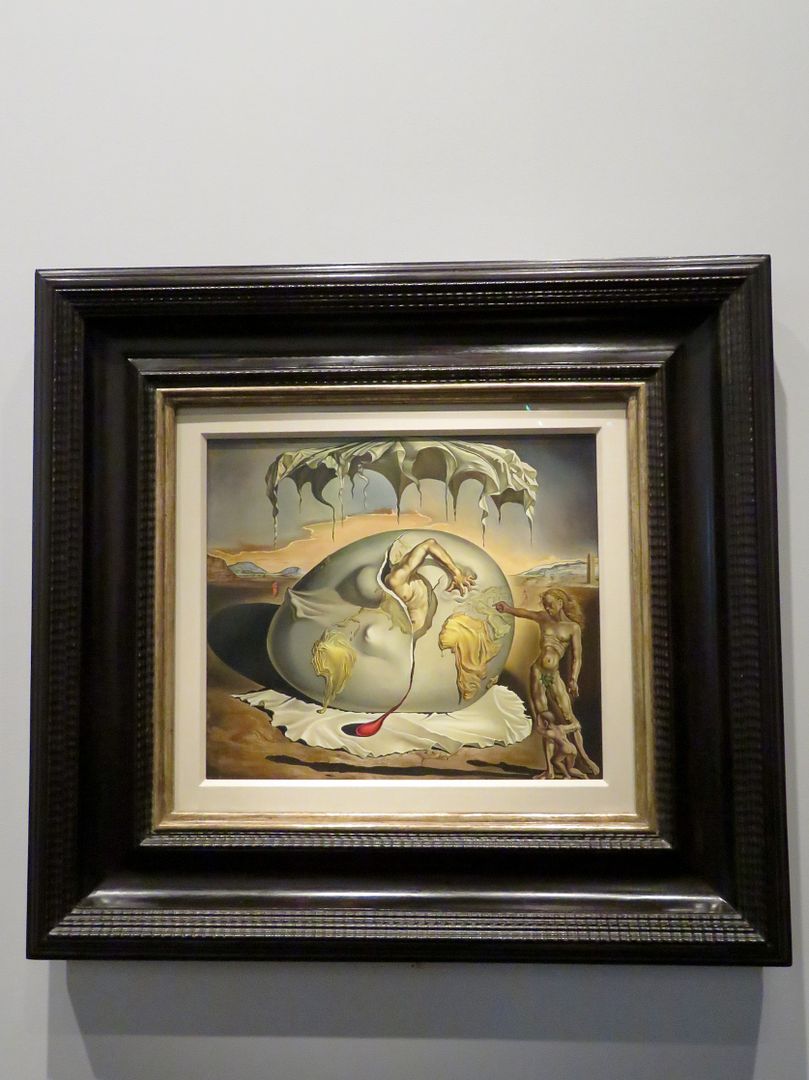
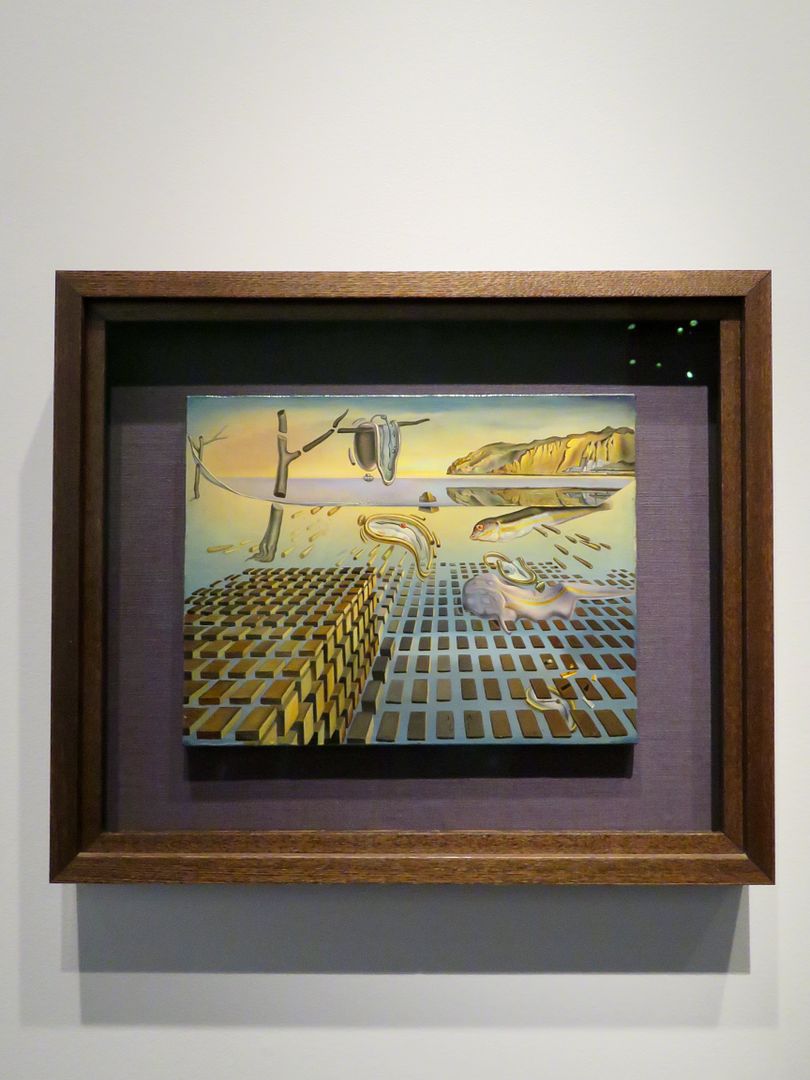
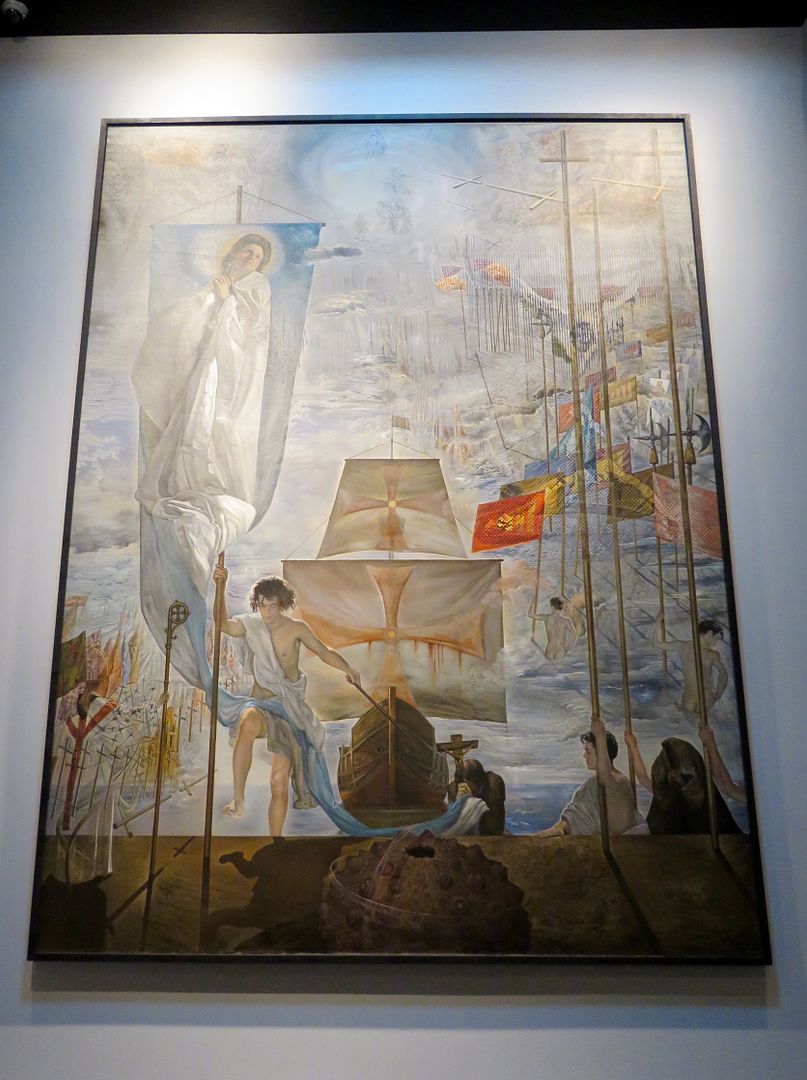
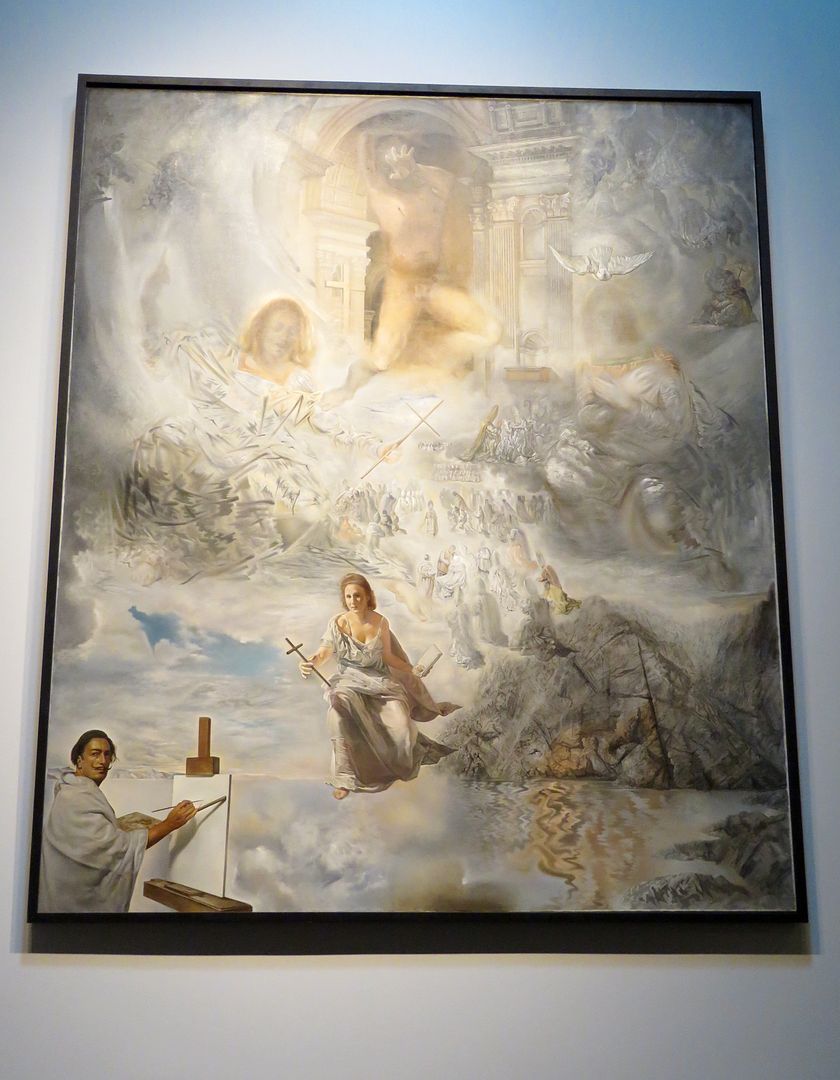
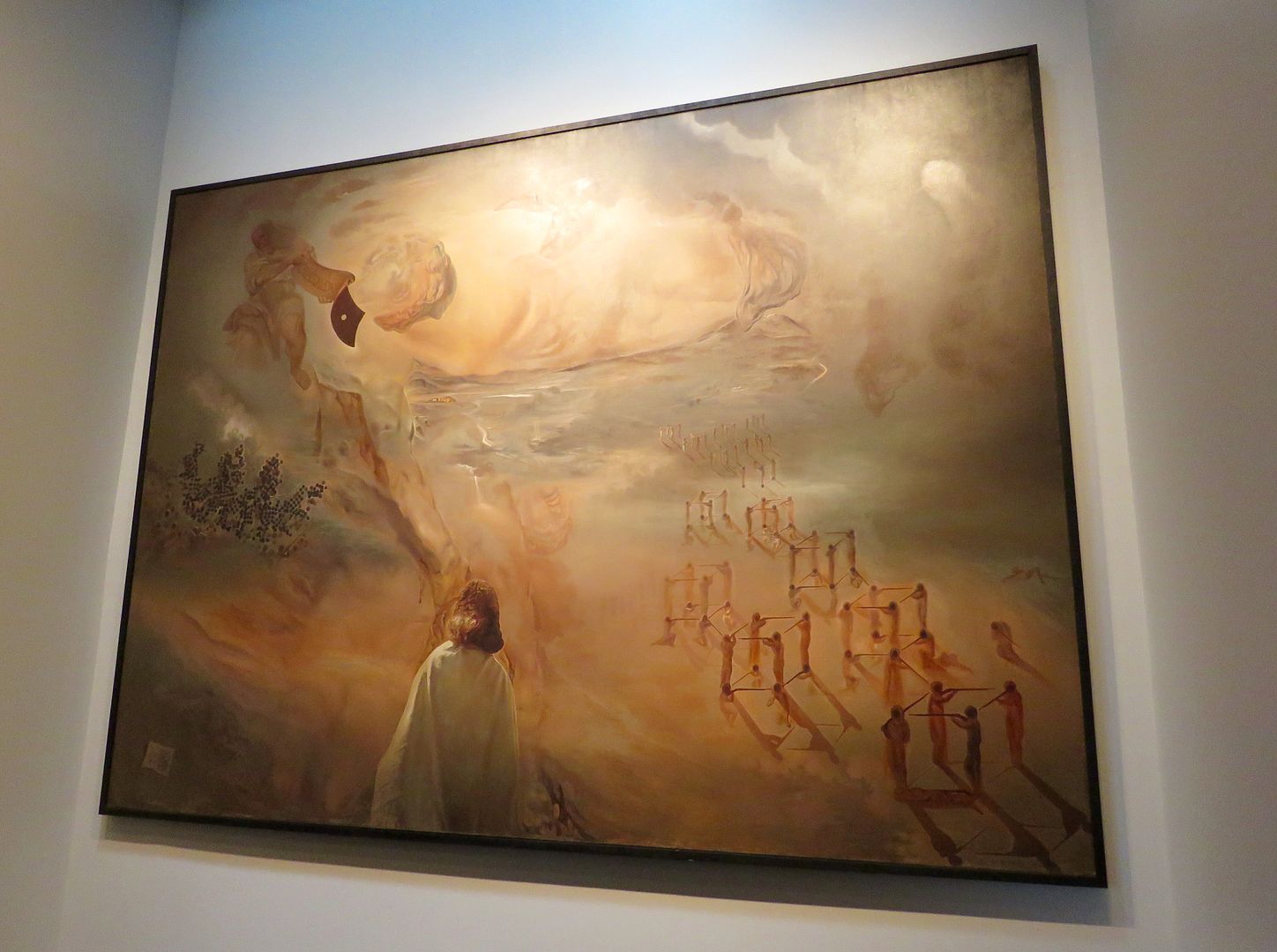

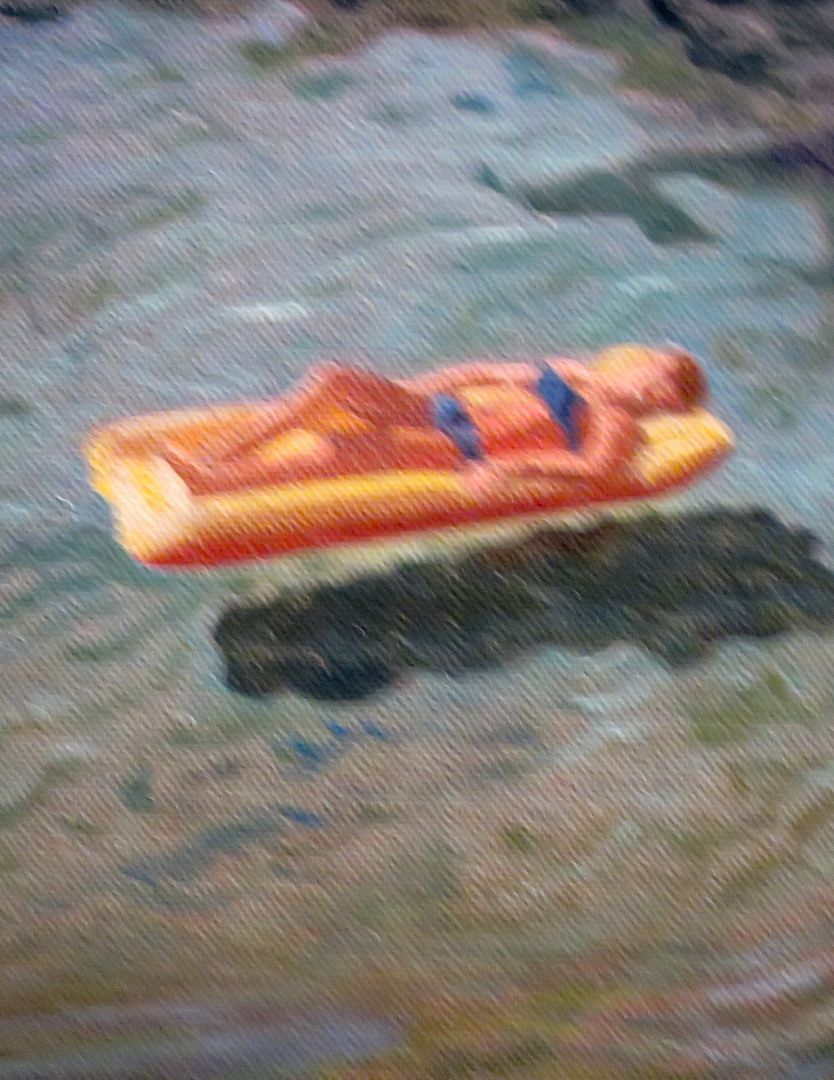

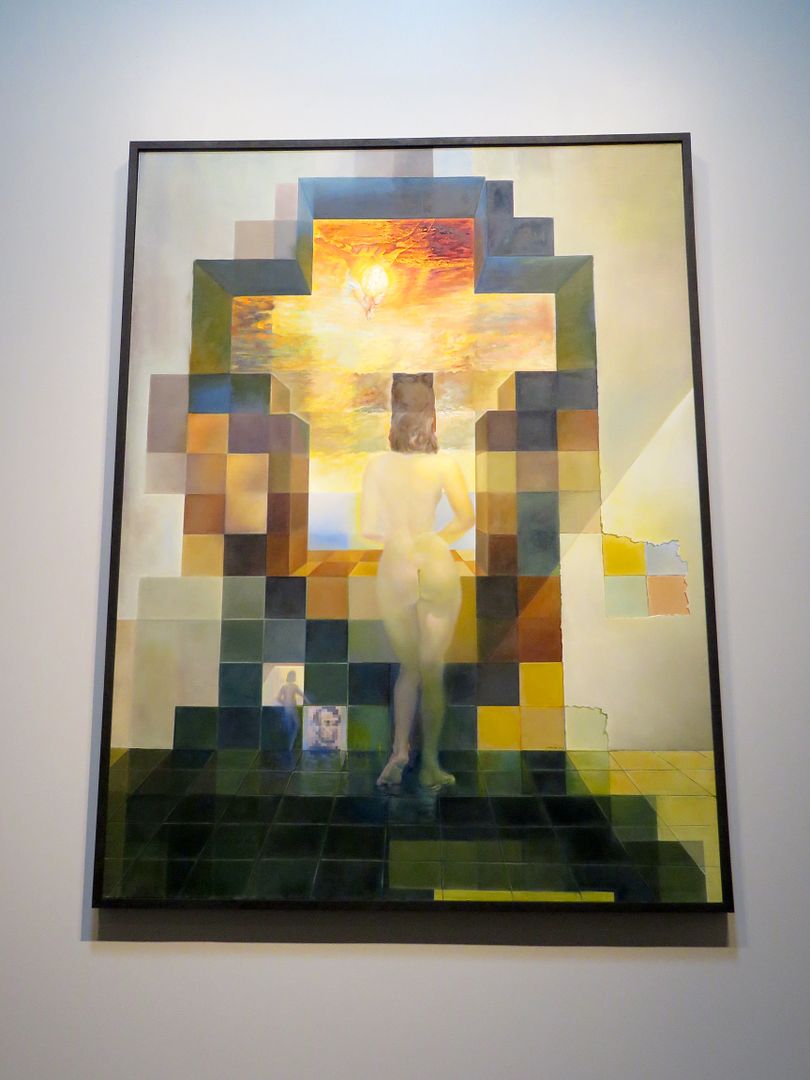


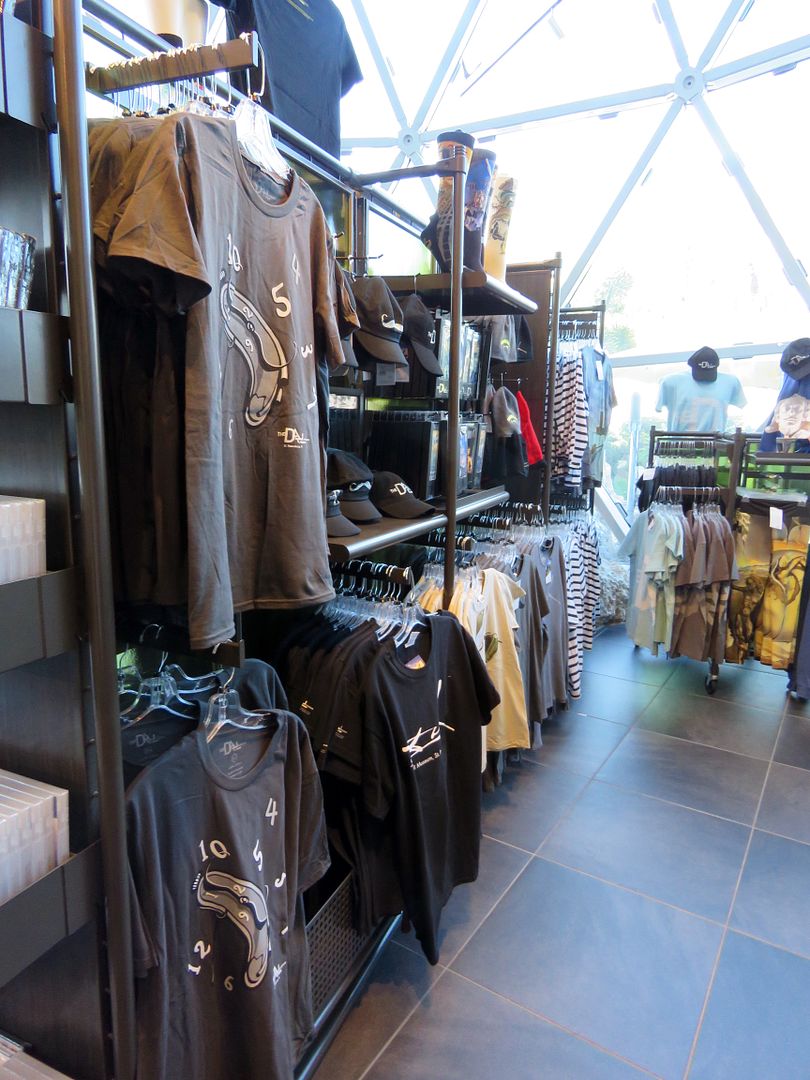
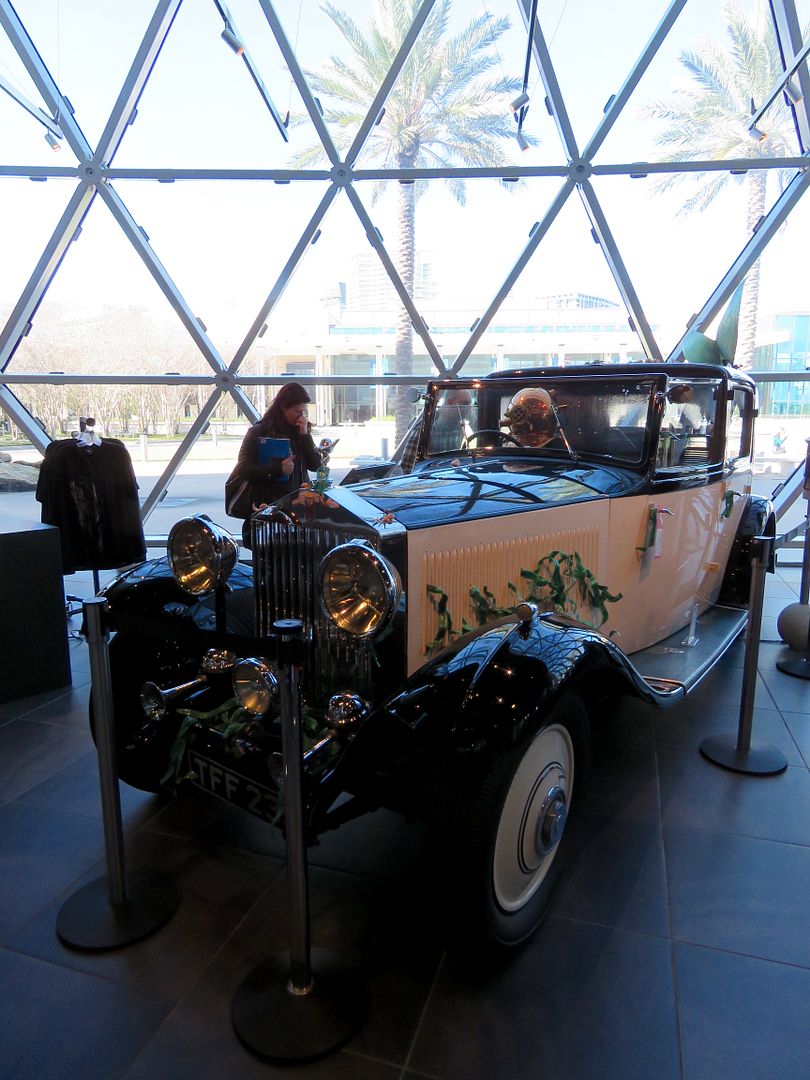
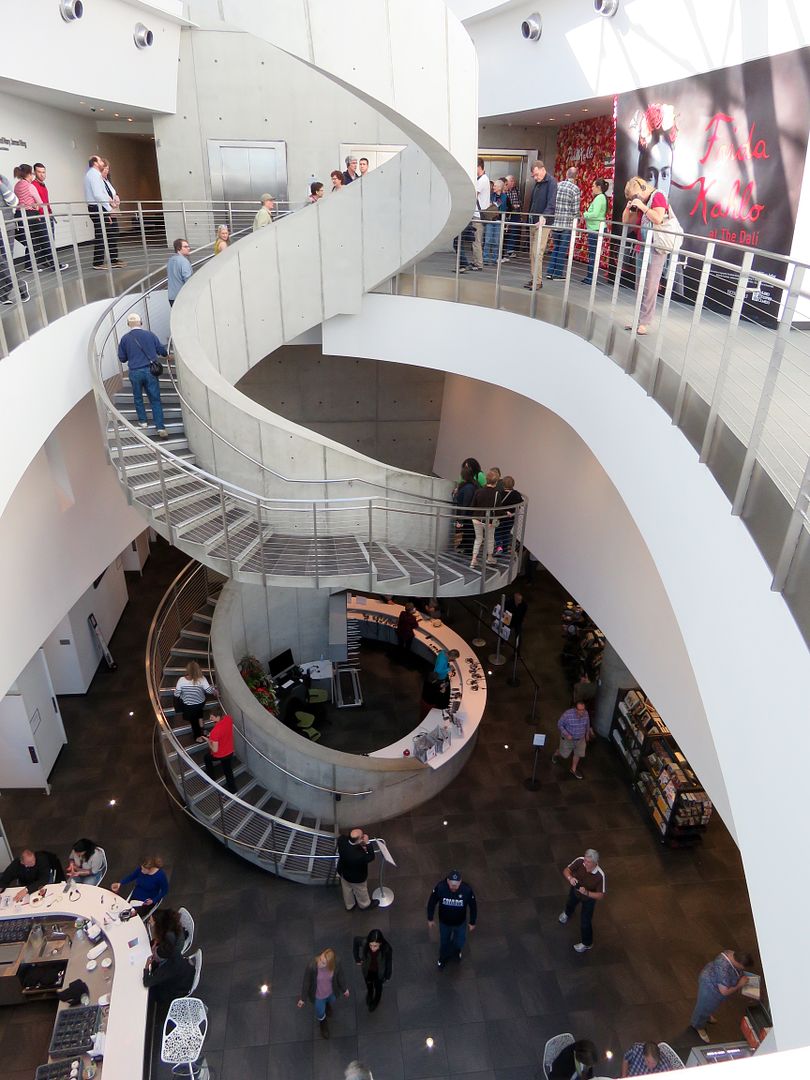
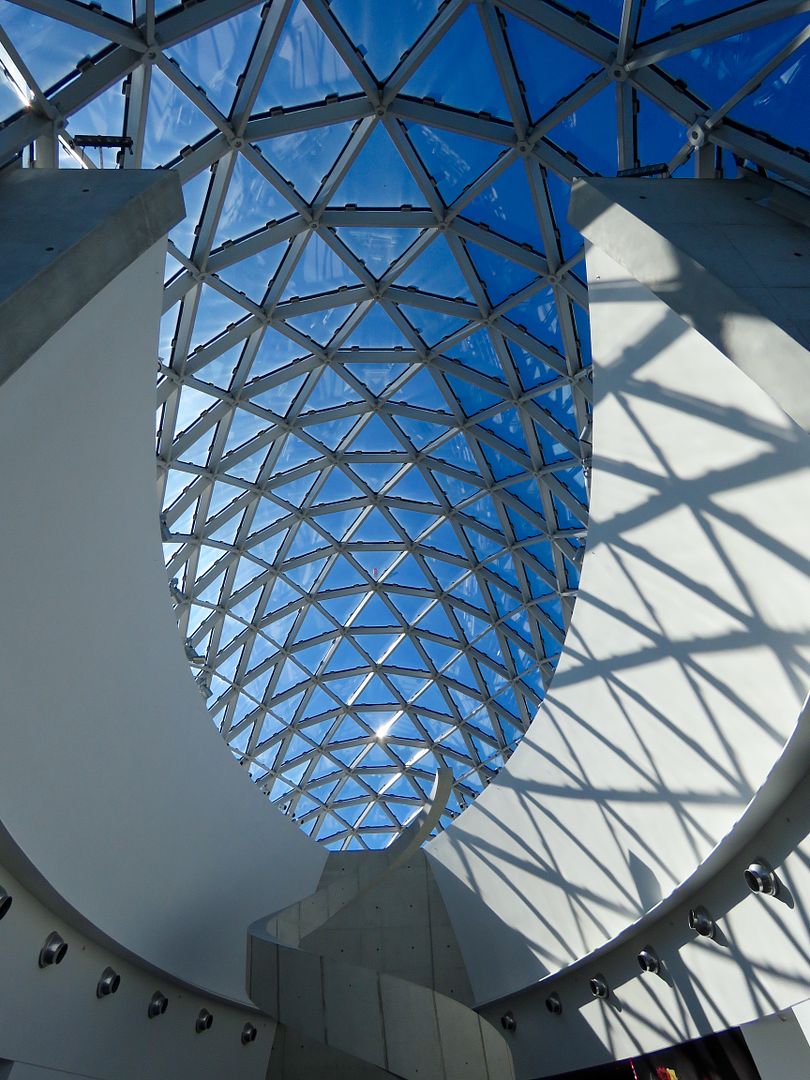
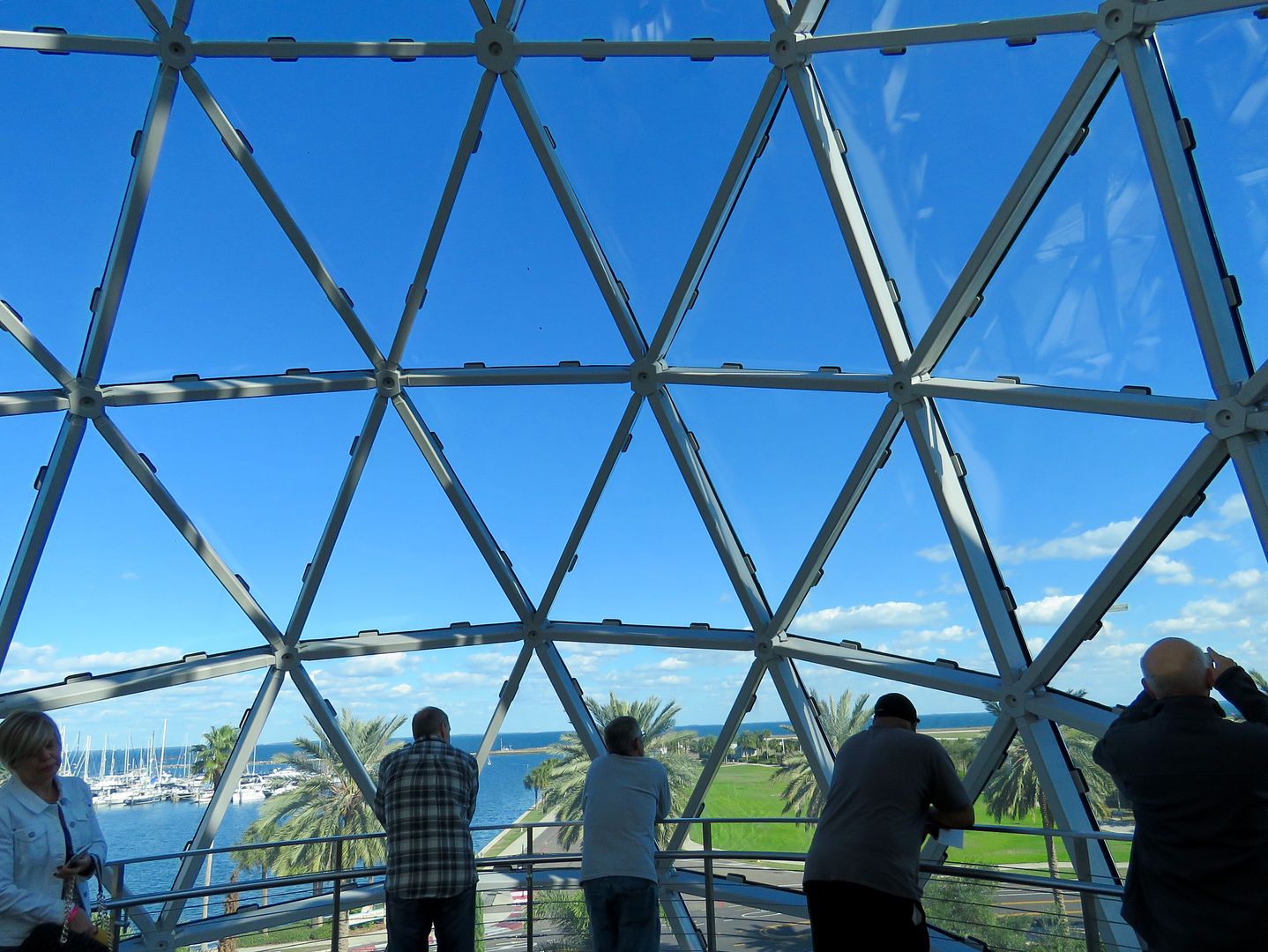
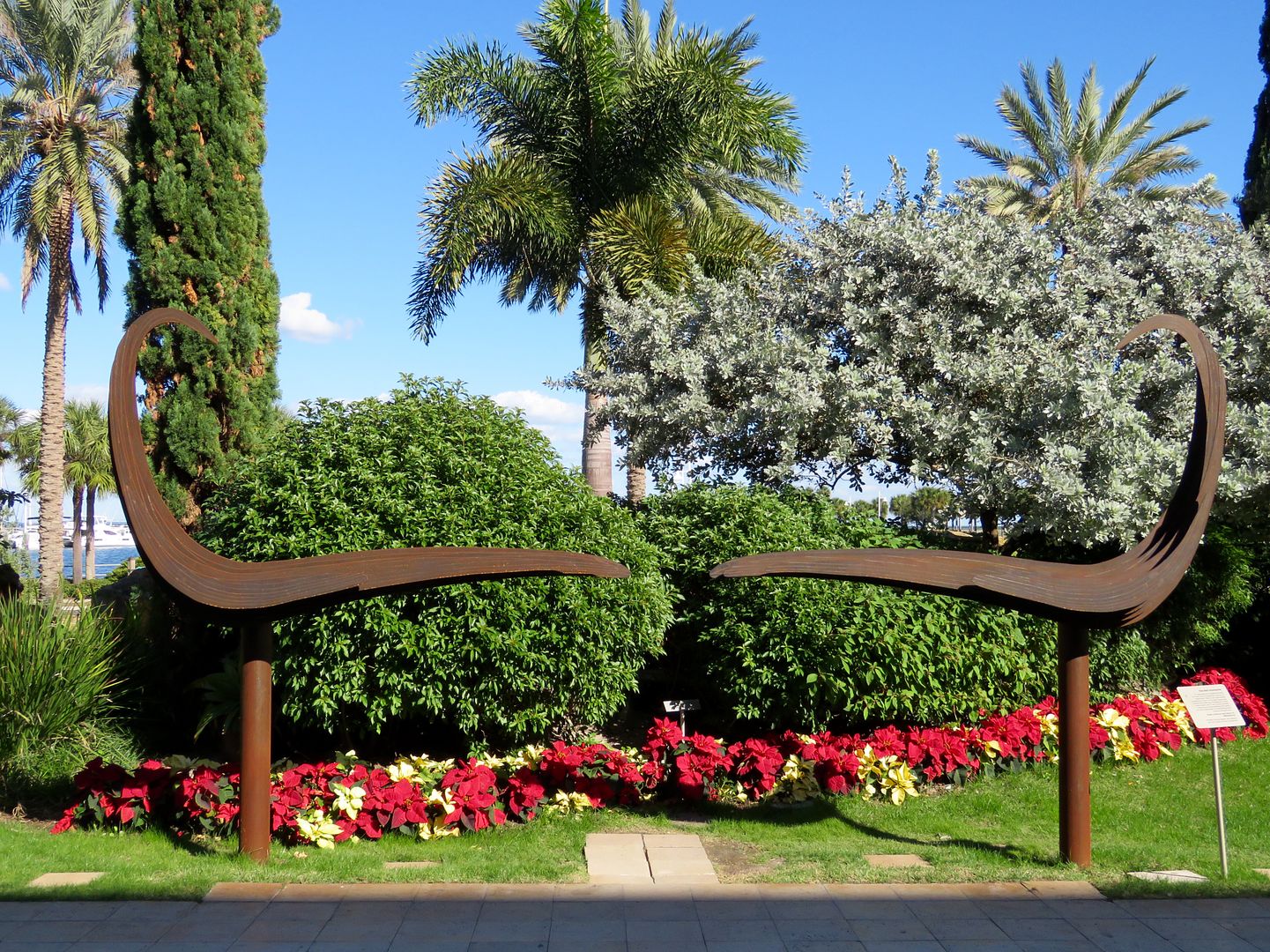

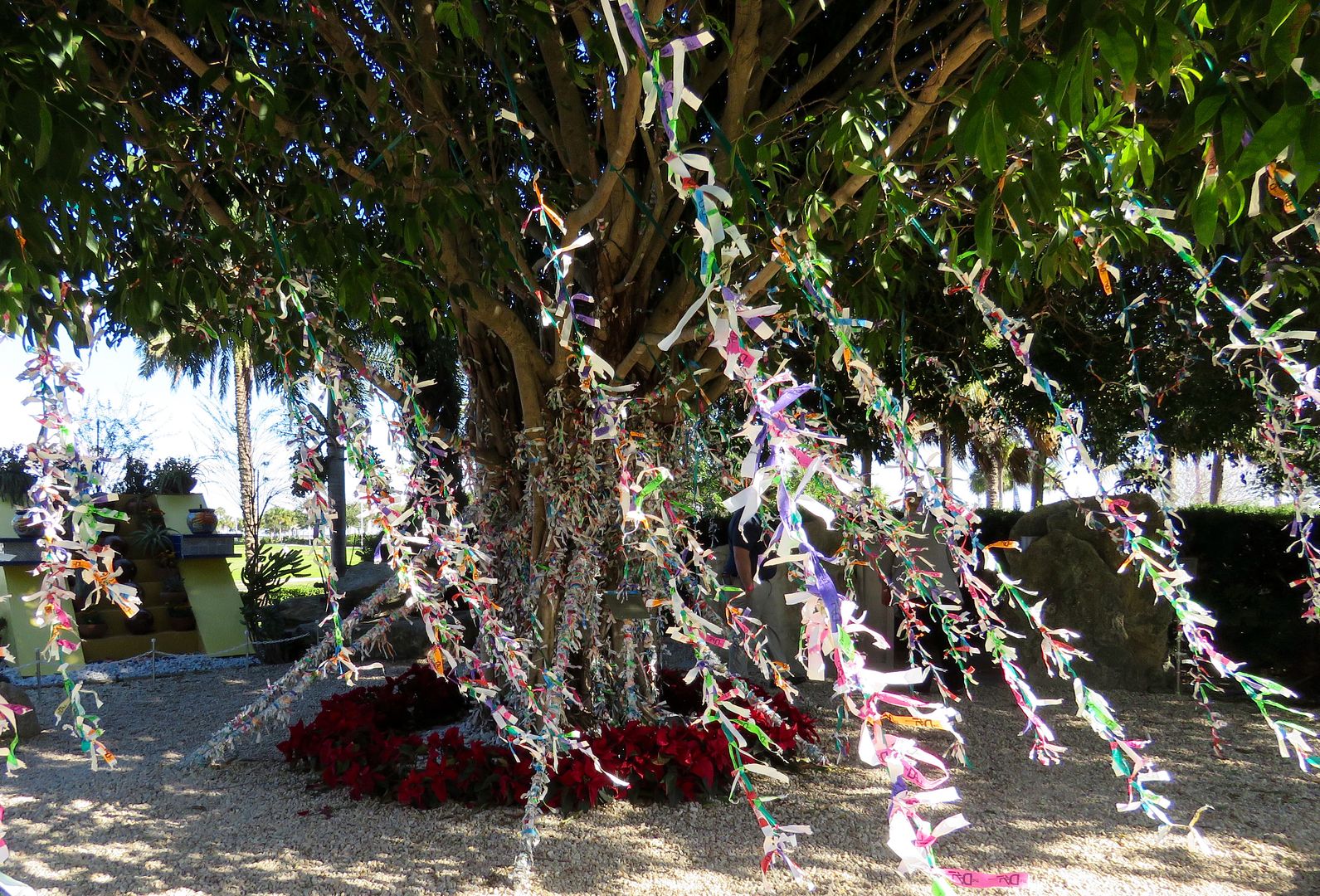
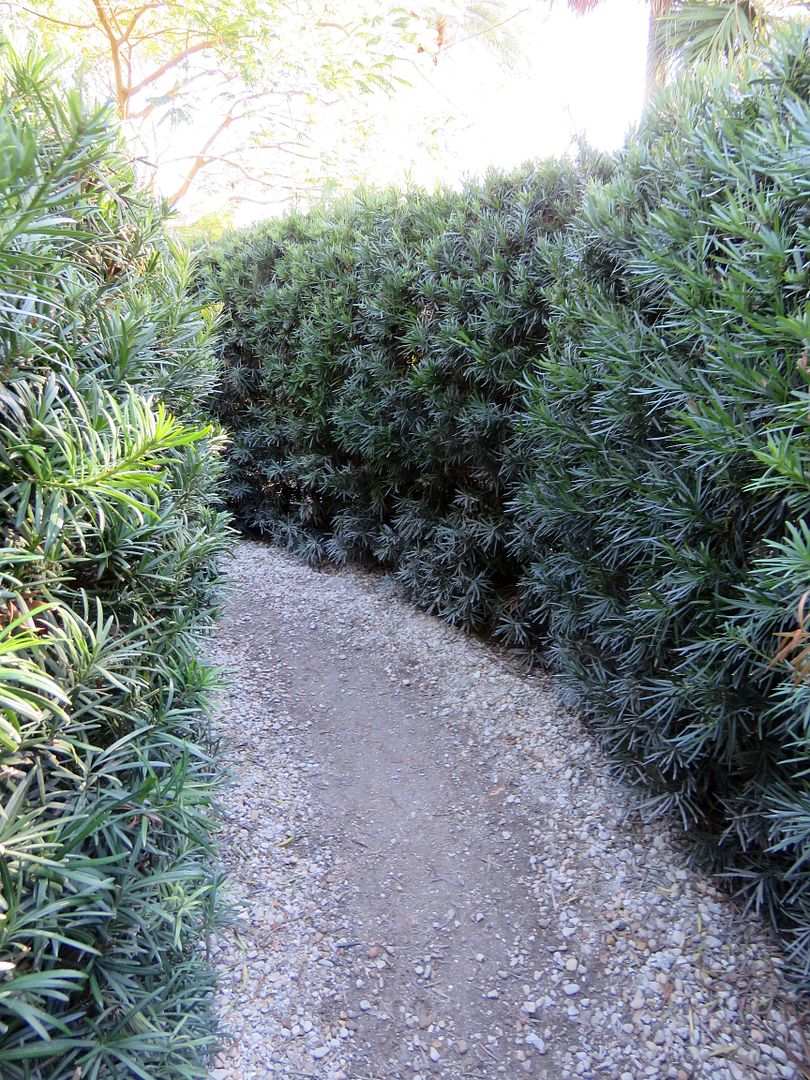
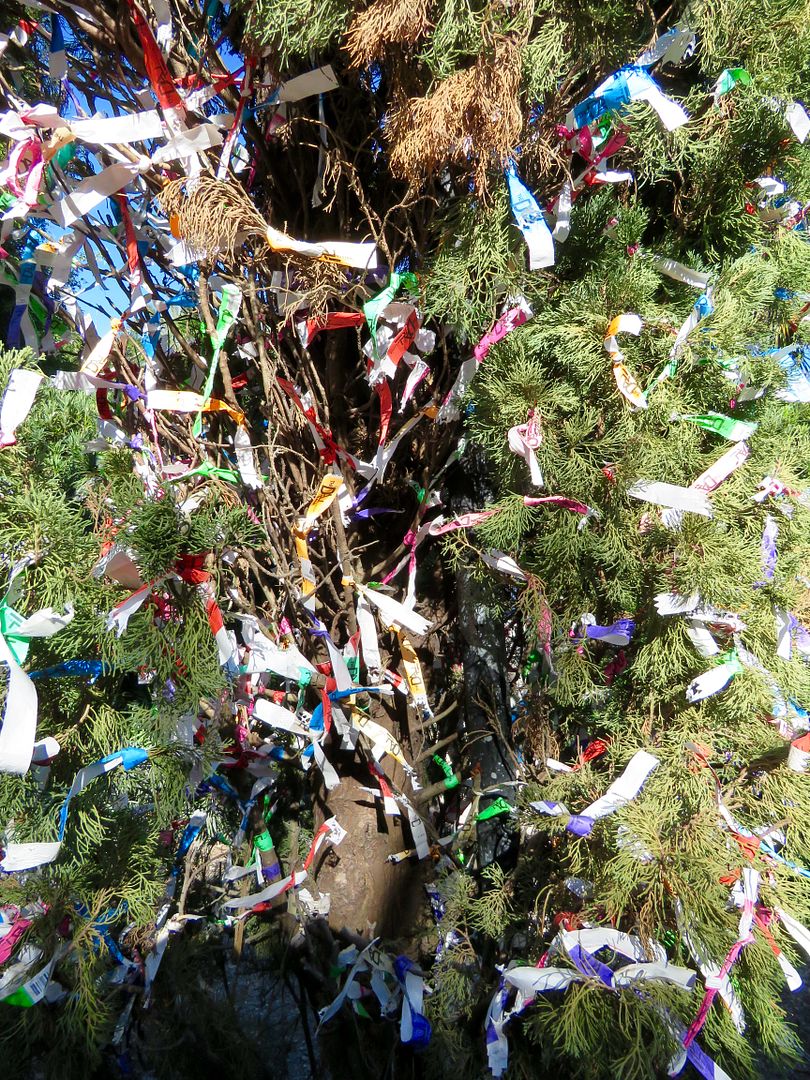
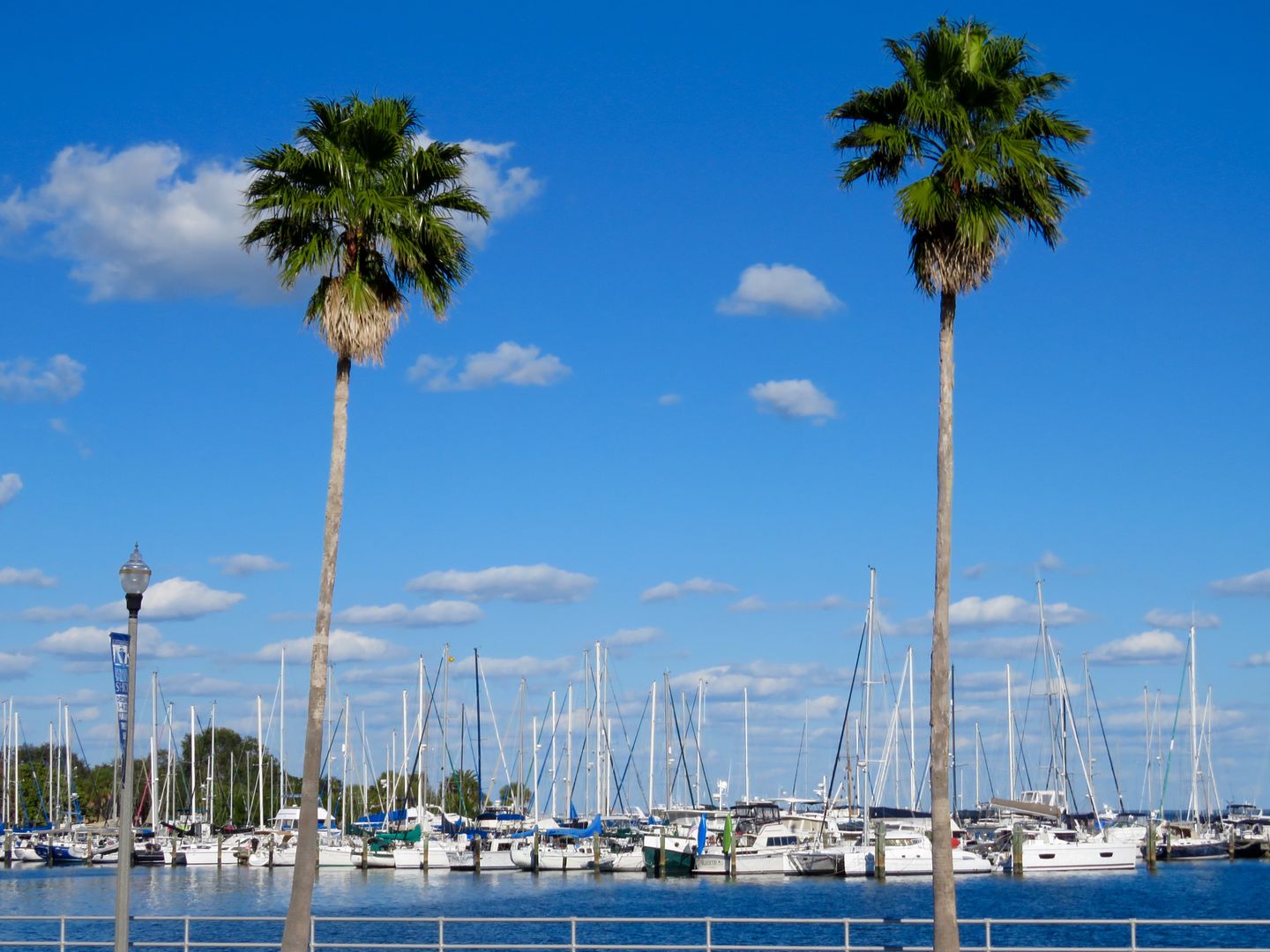
One of our favorite stops in that area.
ReplyDeleteIt was great! Anything else we should not miss in the area? Hope you are enjoying winter in a nice, warm location!
ReplyDelete